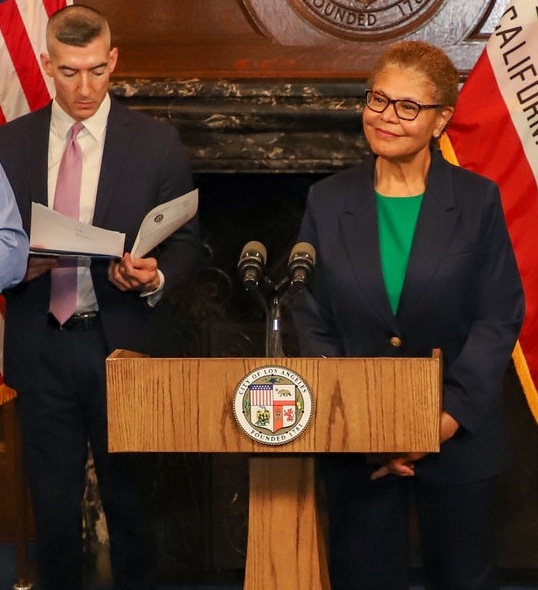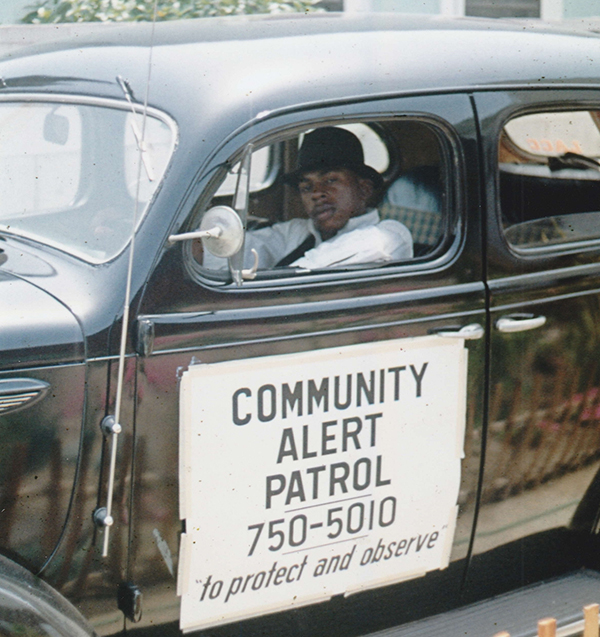Wave Wire Services
LOS ANGELES — Gov. Gavin Newsom has unveiled a four-tier, color-coded system that will use daily coronavirus case numbers and positivity rates to guide counties’ ability to reopen businesses, a process he said will take a slow and more stringent approach to economic reopening.
“COVID-19 will be with us for a long time and we need to adapt,” Newsom said. “We must deal with this reality and this fundamental truth until there is a vaccine, until we have the kind of therapeutics that could substantially mitigate the spread and the impact of COVID-19, that we will simply need to adapt our behaviors until that time.”
The change did not appear to have any immediate impact on businesses in Los Angeles County. The new system does permit barbershops and hair salons — which are currently restricted to outdoor operations — to reopen indoors, along with indoor shopping malls at limited capacity, but local health officials would have to sign off on that change first. Los Angeles County health officials said, however, the local health order “has not been changed to permit these reopenings.”
“As such, since county orders may be more restrictive than state guidance, all current restrictions remain in place until the Los Angeles County Department of Public Health and the Board of Supervisors have an opportunity to review the suggested guidance from the state and take actions that are appropriate for our county,” a statement issued by the county said.
The four-tier system replaces the state’s coronavirus monitoring list, which was being used to gauge individual counties’ success in controlling the spread of COVID-19. Counties on the monitoring list — including Los Angeles and Riverside — were heavily restricted in terms of allowable business operations, while counties not on the list — including Orange and San Diego — were given more leeway to reopen economic sectors and even schools.
Newsom called the new system a “more dynamic list that we hope is not only more dynamic but much more simple to understand.”
The monitoring list relied on six criteria — new case rates, positivity rates, testing capacity, hospitalization numbers and availability of intensive-care unit beds and ventilators.
The new system, however, relies on two metrics: the daily rate of new cases per 100,000 residents, and the seven-day average rate of positive tests.
Based on those numbers, counties are filtered into one of four tiers:
- Counties with more than seven new cases per 100,000 residents and a positivity rate of more than 8% are in the purple (“widespread”) category.
- Counties with four to seven new cases per 100,000 and a positivity rate between 5% and 8% are in the red (“substantial”) category.
- Counties with one to 3.9 new cases per 100,000 and a positivity rate from 2% to 4.9% are in the orange (“moderate’”) category.
- And counties with less than one new case per 100,000 and a positivity rate less than 2% are in the yellow (“minimal”) category.
Of California’s 58 counties, 38 are now listed in the purple, or “widespread,” category, which Newsom equated to being on the previous monitoring list. Although Orange County recently fell off the monitoring list, it was placed in the purple category because the new system only allows counties to move between tiers every 21 days, and counties must meet statistical criteria for at least 14 days before moving into a new category.
Los Angeles County falls into the purple category.
As counties move down the list of risk categories, restrictions on business operations are slowly eased.
In conjunction with the switch, the state revised its website, covid19.ca.gov, on which people can enter their county and choose an economic sector. The website will then tell the user what category the county is in and provide information about what businesses are open and what types of restrictions they must adhere to.
“We are pleased that Governor Newsom has taken a pragmatic approach to reopening California businesses in order to jump start the economy,” said Maria S. Salinas, president and CEO of the Los Angeles Area Chamber of Commerce. “We are also concerned how this roadmap may affect businesses already struggling that must remain closed. The chamber will continue its efforts to ensure those businesses have the support they need to make it through this already difficult time.”
“This step by the governor is important because it leverages prior attempts to restart the economy as a guidepost, which will ensure our economy will have fewer starts-and-stops. With these guidelines, businesses will need the support of government and of every Californian to follow the health orders so we can all safely return to work,” Salinas added.











